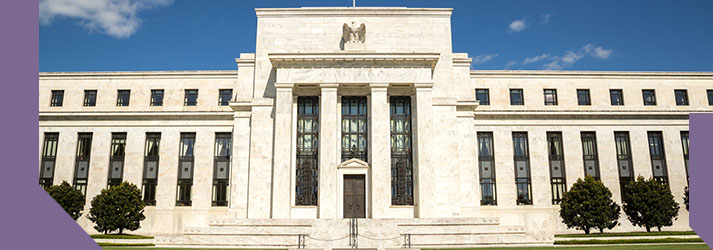As the Fed hikes rates once again, and predicts more rises this year and next, the yield curve continues to flatten.
- The Federal Reserve hiked interest rates again this week, bringing the Fed funds rate to 2-2.25%.
- This bullish analysis stands in notable contrast to the money markets, where the yield curve continues to flatten
- One side looks too optimistic and the other too pessimistic.
The Federal Reserve hiked interest rates again this week, bringing the Fed funds rate to 2-2.25%. It predicts one more hike before the end of the year, and dropped language saying that the ‘the stance of monetary policy remains accommodative’. It also revised its estimates for US GDP in 2018 from 2.8% in June to 3.1% and also raised its forecasts for 2018.
However, this bullish analysis stands in notable contrast to the money markets, where the yield curve continues to flatten. This has historically been a precursor to a recession, suggesting investors believe that the current economic surge may be about to roll over. Who is right?
Anna Stupnytska, global economist for Fidelity International points out that Chairman Chairman Powell took a relatively dovish tone at the press conference, leaving some room for flexibility on the future path of rates. She adds: “For now, activity strength continues and inflationary and wage pressures are becoming more broad-based, giving the Fed enough confidence to carry on with the hiking cycle. While trade tensions have certainly risen over the past few weeks, there has not been enough evidence so far suggesting tariffs are having a significant negative impact on the economy, at least for now, although sentiment has been affected to some extent. With the fiscal stimulus set to continue boosting growth through the first half of 2019, the bar for the FOMC to change the message or steer away from the policy path communicated via the dots at present seems very high.”
However, she believes the economy may start to decelerate as soon as mid-2019. Fiscal stimulus will start to wane and trade tensions may have an impact: “While the dot plot suggests a fourth hike this year and three more next, this will likely prove too aggressive for the US economy, especially considering that the net impact of quantitative tightening running in the background is still ambiguous”.
One side looks too optimistic and the other too pessimistic. Much will depend on the outcome of the trade stand-off and the upcoming mid-term elections. This may determine whether the US can remain on its current growth path.
The question is an important one for emerging markets, which have seen some respite more recently, thanks to increasing weakness in the Dollar. Nevertheless, as financial conditions tighten, it will expose any vulnerabilities. The US has continued to surprise on the upside, but investors should be wary of expecting it to do so forever.




